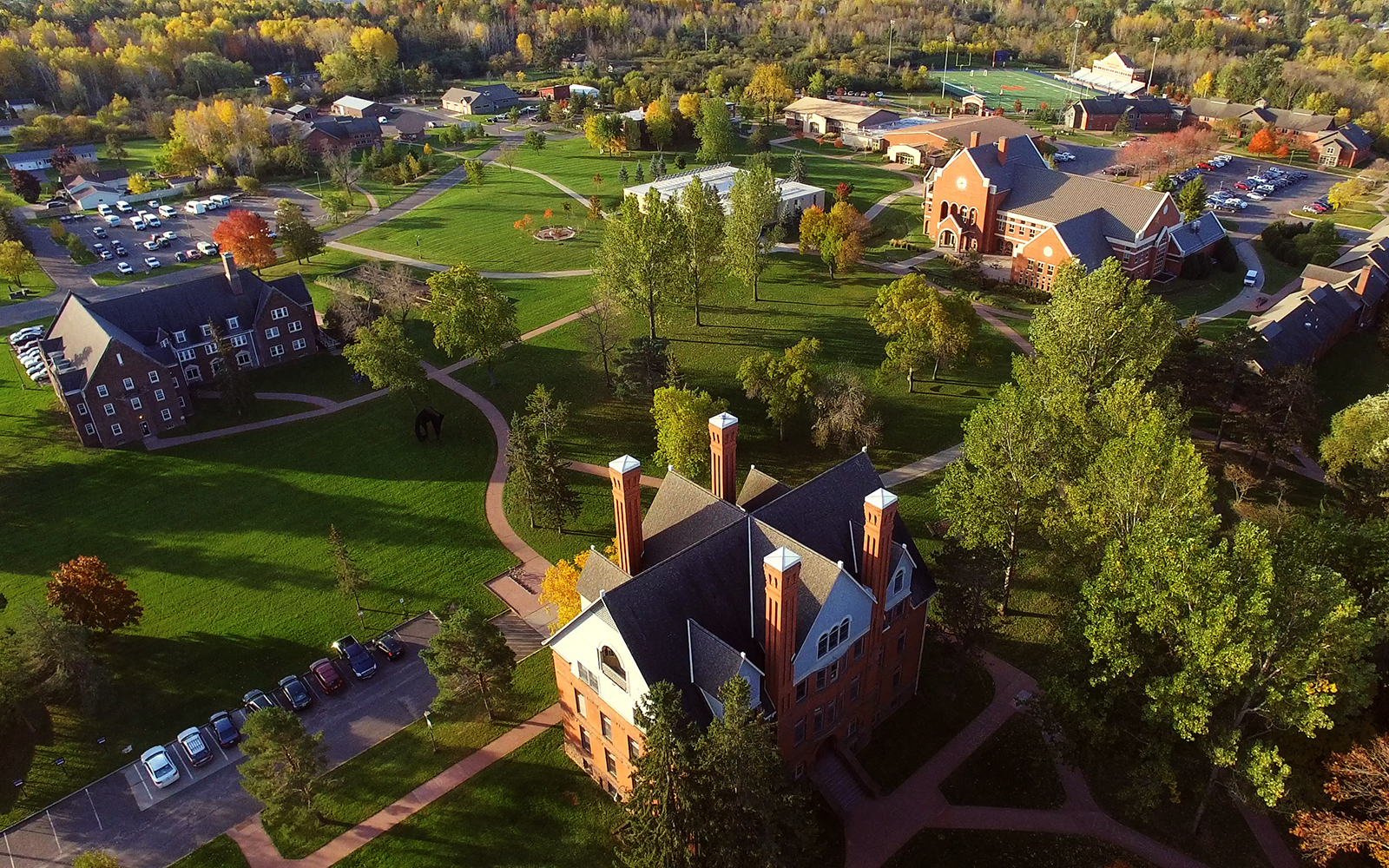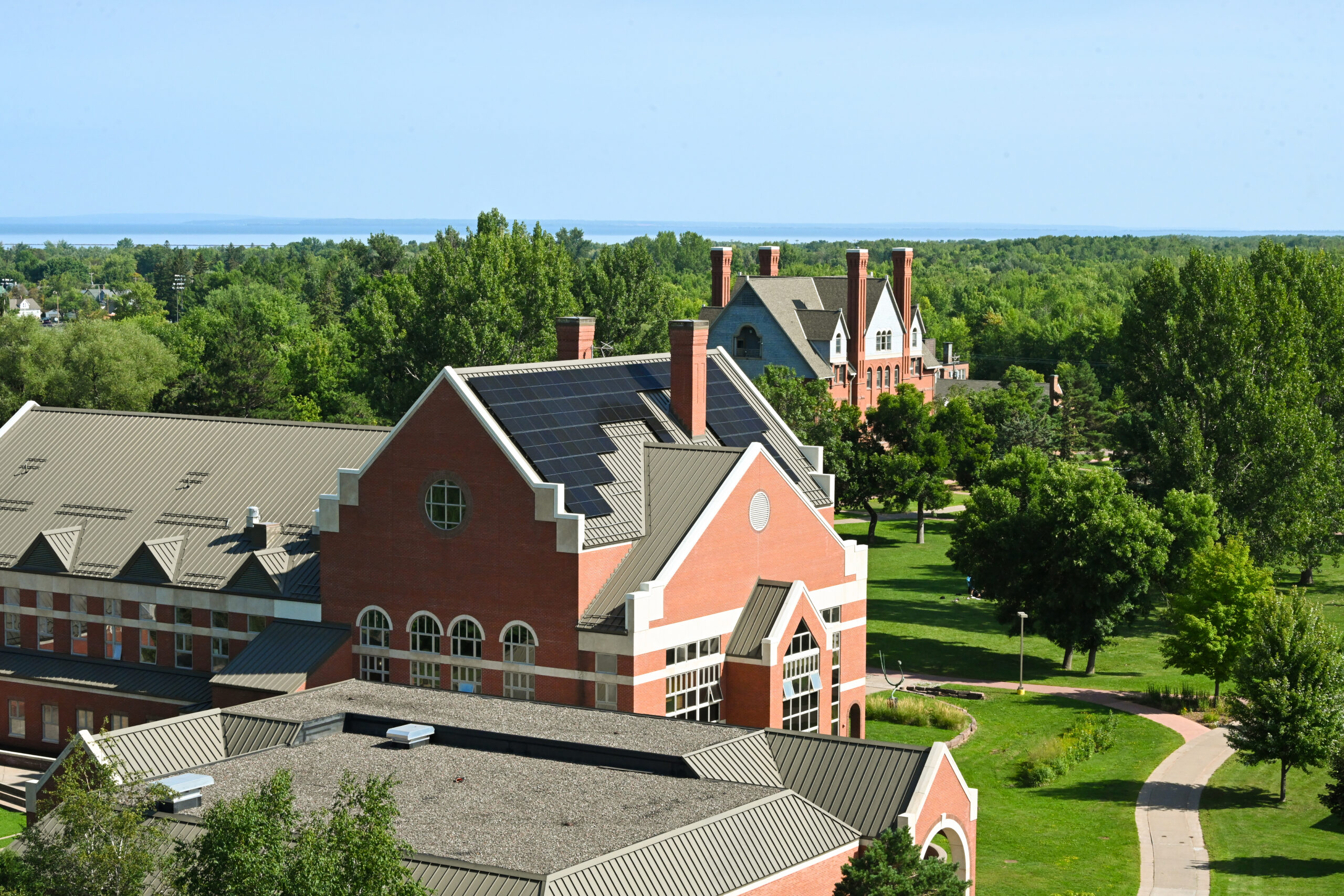After staving off closure last year following a multimillion dollar budget shortfall and seriously declining student enrollment, Ashland’s Northland College last week announced this semester will be its last.
The 133-year-old college, acclaimed for its environmental education curriculum, consists of 19 buildings on a 130-acre campus, plus another natural area of about the same size.
The closure not only impacts students struggling to finish their degrees but also faculty and staff whose jobs contribute to the city’s economy, culture and identity.
Stay informed on the latest news
Sign up for WPR’s email newsletter.
“We have local people who have come to the college to teach and work, as well as those from across Wisconsin and Minnesota and the entire nation who love it here and decided to stay,” said Barb Lundberg, who was named the college’s interim president last week to oversee the shutdown. “This is really hitting everybody hard, and it’s an economic impact the community is going to face.”
Lundberg’s appointment followed the resignation last week of its previous president, Chad Dayton. Lundberg, who had been the college’s vice president for academic affairs, joined WPR’s Robin Washington on “Morning Edition” to talk about what the school’s closing means for its students, faculty and staff, and campus.
This conversation has been edited for clarity and brevity.
Robin Washington: How do you pack up after 133 years?
Barb Lundberg: Right now, we’re really concentrating on our students and making sure that those who are on track to graduate will graduate. For those who aren’t graduating, we are working on creating agreements with partner institutions as well as transfer opportunities and providing them with the information that they’re going to need to make these very serious decisions.
Our goal is to make sure that each student is treated individually, providing them with a faculty advisor, a staff advisor and coaches if needed. We’re holding information sessions for students both this week and after the spring break.
RW: Is the small number of students one advantage to the disadvantage of the enrollment shortfall?
BL: Yes. We have about 250 students currently enrolled, with about 100 graduating this spring. So we’ll have about 150 students who will need to find new home institutions.
That’s not a large number, so our goal is to try to help each and every person find the best placement for them.
RW: What sort of outplacement will you be able to provide for faculty and staff, and how many are there? I’m wondering if local or regional employers have made inquiries, considering there is a labor shortage.
BL: We have approximately 150 active employees, which includes full- and part-time faculty and staff. That does not include student workers or our food service, which is contracted, and who will also need to find other employment.
Our interim human resource director had a meeting last week with our local Northwest Wisconsin Workforce Investment Board and Northwest Wisconsin Concentrated Employment Program, two entities that are located here in Ashland that are very supportive of working with our staff and faculty to help them find other positions. Those organizations also have alumni working for them.
RW: You have some acclaimed specialty centers, including the Sigurd Olson Environmental Institute and the Hulings Rice Food Center. Can any of these be spun off as individual entities, or perhaps acquired by other institutions? I’m wondering if one of the local tribal governments might not be interested in the latter.
BL: I don’t want to speculate at this point just because we’re so recently into all of this. I’m sure we’ll have more information on that later.
RW: How about the buildings? Are there interested buyers?
BL: That’s also too soon to talk about. We are working on lots of different activities in the process of closing the college. Some of that includes making sure we’re following all the regulatory or compliance requirements.
RW: What might remain after the closure? You mentioned the alumni network, which spreads across the country, if not the world. People certainly know the college’s name and reputation after 133 years.
BL: We do have a very strong alumni network with wonderful leadership. I don’t know all what their plans are, but I can imagine that they are going to work hard to keep those actions alive.
If you have an idea about something in northern Wisconsin you think we should talk about on “Morning Edition,” send it to us at northern@wpr.org.



